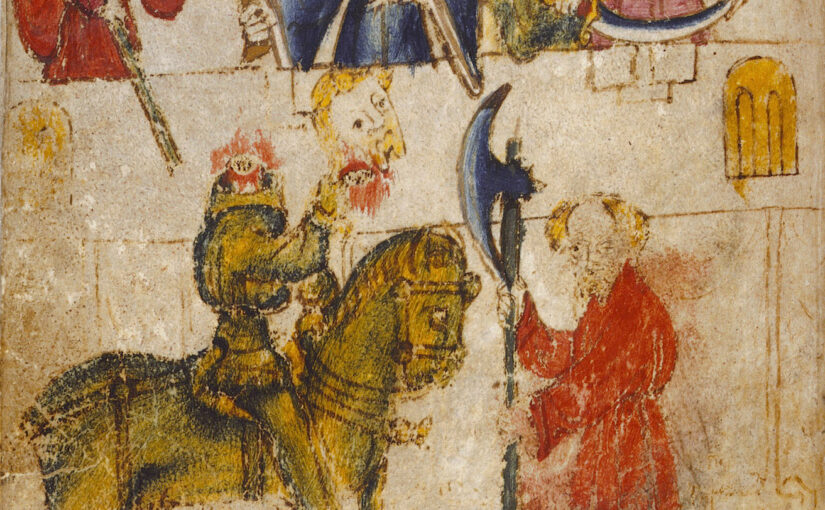Introduction:
There are few legends as famous and far-reaching as that of King Arthur. The “Once and Future King” is said to have ruled Britain sometime between the 5th and 6th centuries, and the first stories about him appeared around the same time (Cambridge Companion xv). Stories about King Arthur, written in English, French, and Latin, exploded in popularity in the Middle Ages. Works such as Geoffrey of Monmouth’s History of the Kings of Britain (1135) and The Life of Merlin (1150), Chrétien de Troyes’ Arthurian romances (1169-1181), and Sir Thomas Malory’s Le Morte D’Arthur (1469-70) set in place many of the hallmarks of Arthurian legend that we recognize today (xv-xvii).
One such work is Gawain and the Green Knight, written in 1390 by an unknown English author called the Pearl Poet for his other most famous work, Pearl (Sir Gawain and the Green Knight). While the original romantic poem is in Middle English, the version we have chosen to use is a modern English translation by A.S. Kline (2007). It maintains the alliterative style characteristic of Middle English poetry, and while the majority of the verses are unrhymed, the end of each poem features a ABAB rhyming quatrain called a bob-and-wheel.
Gawain and the Green Knight is one of the many solo narratives that run parallel to the main events of the King Arthur canon. It describes the adventures of Sir Gawain, one of the most virtuous knights in King Arthur’s court, known for his chastity, piety, silver tongue, and gentle manners. Gawain and the Green Knight borrows from earlier Arthurian romances, particularly French courtly romances like those by Chrétien de Troyes (Cambridge Companion 79). His influence appears in the poem’s casual acceptance of the supernatural as well as its inclusion of Morgana le Fay at the very end of the poem (79). The poem also includes other, far older tropes, such as the Irish “Christmas game” involving a trade of blows and a beheading and the “Exchange of Winnings” that takes place in Bertilak de Hautdesert’s castle (79-80). However, Gawain is unusual amongst Arthurian romances in that it confronts its hero’s fear of death and his failures, neither of which the poem fully resolves despite his acceptance at the Round Table (81-82). The result is that Sir Gawain himself is a very complicated character. In English tradition, Gawain is Arthur’s right-hand man and one of the most beloved knights of the court. However, Le Morte D’Arthur paints a very different picture of Gawain. Le Morte was written nearly a hundred years after Gawain, and is meant to be an English “Arthuriad,” or a sequential compendium of all Arthurian legend (84). In writing Le Morte, Sir Thomas Mallory drew much of his information from French sources, in addition to English. The result is that Gawain seems like a different character altogether. The Gawain of Le Morte frequently acts against the code of chivalry, killing a woman and sleeping with another knight’s lover. So, who is Gawain really?
